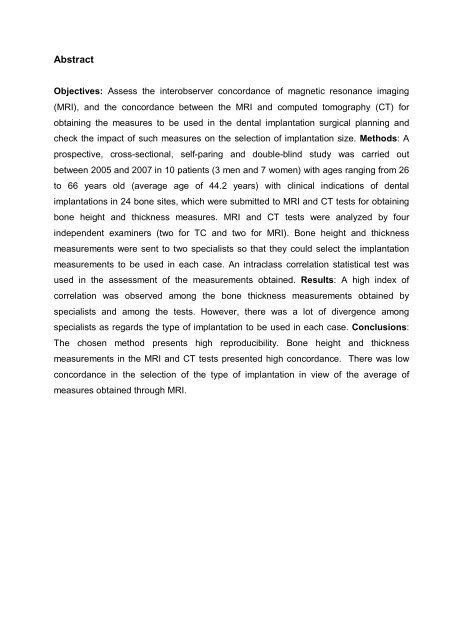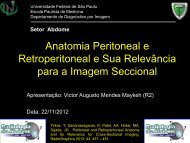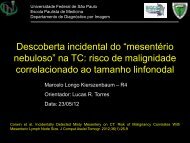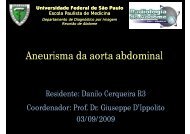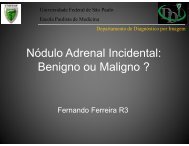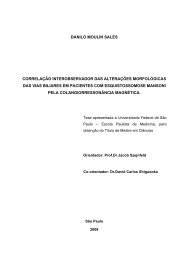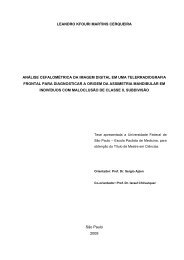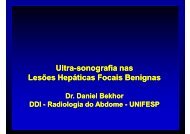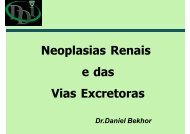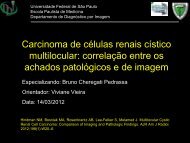tese pronta - (DDI) - UNIFESP
tese pronta - (DDI) - UNIFESP
tese pronta - (DDI) - UNIFESP
You also want an ePaper? Increase the reach of your titles
YUMPU automatically turns print PDFs into web optimized ePapers that Google loves.
Abstract<br />
Objectives: Assess the interobserver concordance of magnetic resonance imaging<br />
(MRI), and the concordance between the MRI and computed tomography (CT) for<br />
obtaining the measures to be used in the dental implantation surgical planning and<br />
check the impact of such measures on the selection of implantation size. Methods: A<br />
prospective, cross-sectional, self-paring and double-blind study was carried out<br />
between 2005 and 2007 in 10 patients (3 men and 7 women) with ages ranging from 26<br />
to 66 years old (average age of 44.2 years) with clinical indications of dental<br />
implantations in 24 bone sites, which were submitted to MRI and CT tests for obtaining<br />
bone height and thickness measures. MRI and CT tests were analyzed by four<br />
independent examiners (two for TC and two for MRI). Bone height and thickness<br />
measurements were sent to two specialists so that they could select the implantation<br />
measurements to be used in each case. An intraclass correlation statistical test was<br />
used in the assessment of the measurements obtained. Results: A high index of<br />
correlation was observed among the bone thickness measurements obtained by<br />
specialists and among the tests. However, there was a lot of divergence among<br />
specialists as regards the type of implantation to be used in each case. Conclusions:<br />
The chosen method presents high reproducibility. Bone height and thickness<br />
measurements in the MRI and CT tests presented high concordance. There was low<br />
concordance in the selection of the type of implantation in view of the average of<br />
measures obtained through MRI.


